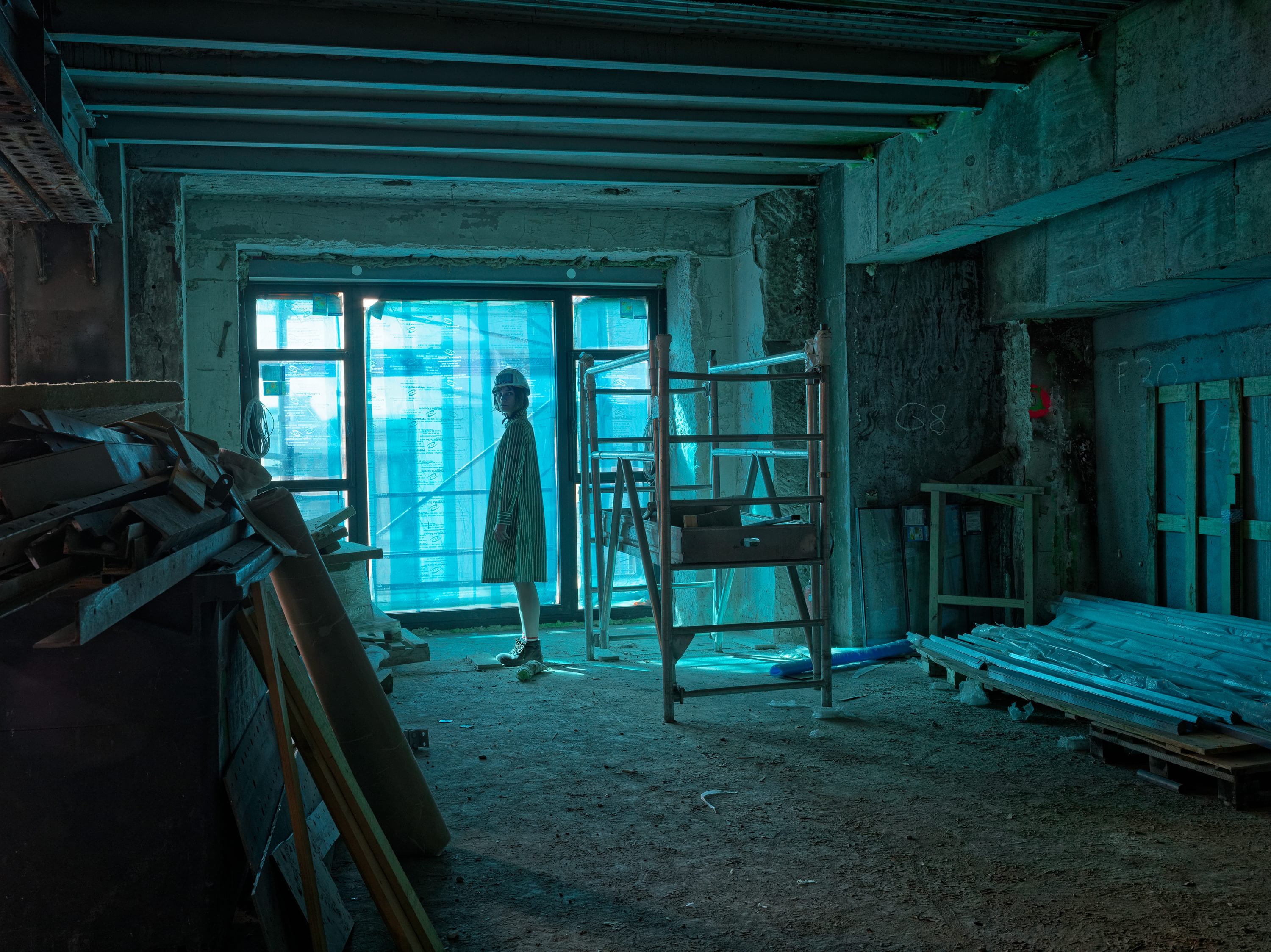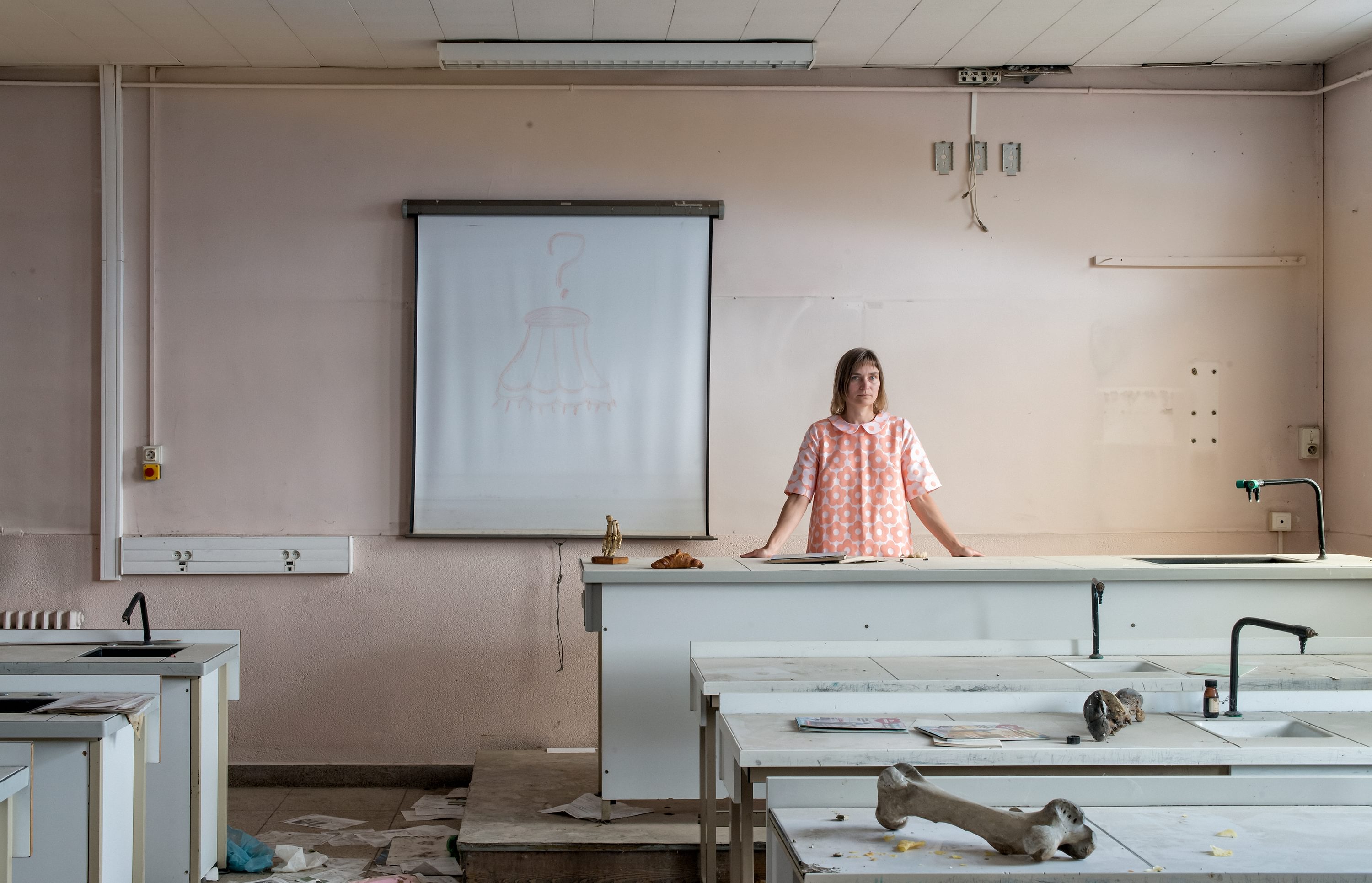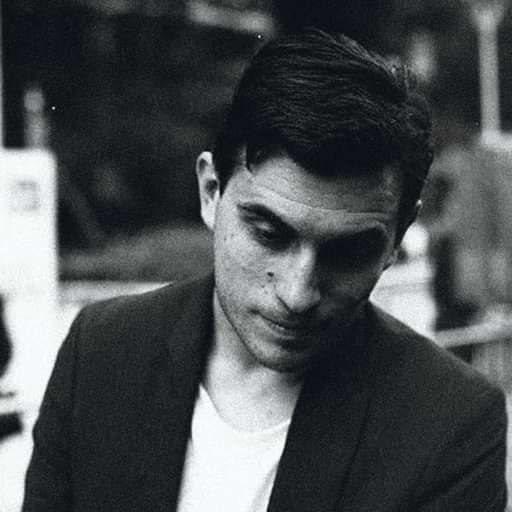Elina Brotherus is a Finnish photographer who has been exhibiting since 1997, in Europe as well as in institutions around the world. She shoots in a range of analogue and digital formats. She is held in particularly high regard in France, where she is partially based, as well as in her native Helsinki. She has maintained an impressively high work rate and boasts rare stamina as an artist. She is, I’ll argue, an artist with an important lesson to share.
From one point of view, Brotherus is a formalist of the highest order. Photography is a mechanical medium—it is a matter of fitting a composition in the frame and letting in a measured amount of light so that the lens sees what you want it to see. Precision is a prerequisite for this medium; there are rules and limits if you intend to construct an image and not just a blurry, nonsensical mess. You literally can’t make a photographic image unless you accept these rules and limits. Born of this mechanical logic, a photographer with a formal instinct employs a natural, precise method. Brotherus builds a world from what’s inside the frame. She figures out what’s possible through this method of capturing the world.

Elina Brotherus, Fenêtre bleue, 2018, 80 x 106 cm, from the series La Samaritaine.
Courtesy of the artist and Martin Asbæk Gallery
Her 2018 series La Samaritaine, for example, is an extended formal riff and exercise in image construction. The series was shot in a Parisian Art Nouveau department store, which at that time was in limbo while the luxury conglomerate LVMH was awaiting permission to complete an ambitious renovation. Over the course of a week-long shoot, Brotherus photographed herself in countless contexts around the empty, crumbly edifice. She measured the space between curved iron boning, pointing her arms wide, becoming as big as she could be, attempting to meet the architecture on its own terms while also making a joke of it (such as in the title of the work L’Homme de Vitruve, a reference Leonardo da Vinci). She shot herself from behind on the edge of the roof, in the middle of the frame, staring in the four different directions available to her and, by extension, the viewer. She threw yellow plastic lighting gels over a wall of large glass windows, suddenly suffusing a bare space with golden warmth, the health and promise of crops at dawn. She threw blue plastic lighting gels over a window in a compact space with pinstriped I-beams on the ceiling and dirt on the floor, suddenly conjuring a cold cave or a whale’s belly. Brotherus’ instinct for building perspectives and potential makes us feel intimate with a space, and allows us to share her journey through it.
“By meaningless work I mean work which does not make you money or accomplish a conventional purpose. It can make you feel and think about yourself, the outside world, morality, reality, unconsciousness, nature, history, time, philosophy, nothing at all, politics, etc. without the limitations of the old art forms.”
Thus, one may view Brotherus’ oeuvre as games and accretion, a process of masterful mapping and conjuring of/in space. She is a scholar of Fluxus, California conceptualism, and land art, and her vocabulary is steeped in these historical strategies. But this is not the artist’s main lesson.
Starting in 2016, Brotherus began an ongoing series called Meaningless Work. The name comes from a 1960 treatise by American conceptualist Walter de Maria. “By meaningless work I mean work which does not make you money or accomplish a conventional purpose,” he stated. “[It] can make you feel and think about yourself, the outside world, morality, reality, unconsciousness, nature, history, time, philosophy, nothing at all, politics, etc. without the limitations of the old art forms.” Witness Brotherus’ dozens of episodes of this so-called meaningless work. She attempts to perform a bondage self-portrait in the prurient, edgy language of Nobuyoshi Araki in Araki. She does not look particularly excited having suspended herself from the ceiling, and in that there’s an answer; proof from this woman’s perspective. She holds a scarf or handkerchief to the wind in the series Measuring Wind Speed, shot in various places between Germany and the Middle East. The wind animates the fabric. She’s not technically measuring anything, but, as these pictures imply, to be there is to measure. The signal lifts, and this is proof. In 4’33”, named after John Cage’s definitive artwork of American meditation, Brotherus stands in a pool of water in an ancient stone cellar. Her mouth hangs open in shock, or transcendence. Time and perception are malleable concepts, per Cage. By her stunned eyes, once again, here’s proof. Brotherus’ Meaningless Work is, in fact, very much to do with meaning. They’re meaningless in that they have no agenda, yet they accumulate meaning through her dogged presence and her willingness to try. The artist is present in almost every picture, and she clicks the shutter every time. There is no thread linking these works, but they add up to one wonderful idea: meaning is doing.

Elina Brotherus, Science Class 2, 2014, 60 x 90 cm, from the series Carpe Fucking Diem.
Courtesy of the artist and Martin Asbæk Gallery
In 2015, aged 43, Brotherus made Carpe Fucking Diem, a series and a book confronting a single, outsized ‘issue’ — being a childless woman — in a delirious, atomized way. The works in this series are abject, confrontational, and crass, like Sarah Lucas; or sexy and uncanny quasi-fashion editorial in the Torbjørn Rødland and Wolfgang Tillmans mode; or everyday snapshots of food and life, classical, elegant documentary. Science Class and Science Class 2 are staged fantasies with Brotherus teaching a class of bones in a tumbledown lab, two ice-cold melodramatic images far beyond categorisation. By the time Carpe Fucking Diem is finished, motherhood is no longer a monolith. It is a memory.
Elina Brotherus’ engagement with photography—a life practice—is an oeuvre that protects the value of images, protects the image-makers’ gift to deliver clear recordings of life and the world. Clarity is a rare and precious thing in 2020. I am regrettably obliged to mention that imagery—pictures—are a thing under threat as part of the worrying slime of communication, manipulation, ignorance, and general chaos of internet-driven cultural discourse of today. I am happy to say that Elina Brotherus makes art that continues acting like a human being in the world.

William Pym is a writer, teacher and art gallery person. His first essay collection, That Way, was published by At Last Books, Copenhagen, in 2018. TRUE LIFE, an encyclopedic monograph about Alex Da Corte and Eminem conceived by Da Corte, Pym and Studio Claus Due, Copenhagen, was published by Verlag der buchhandlung Franz und Walther König in September 2020.



